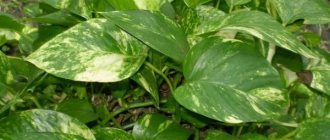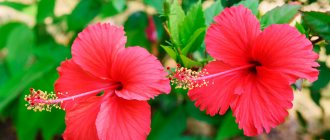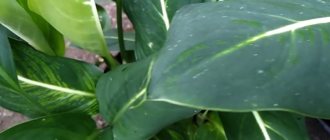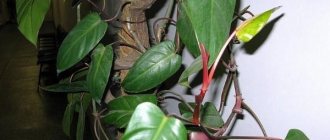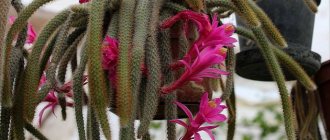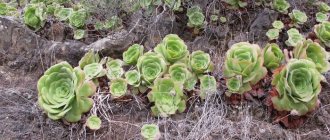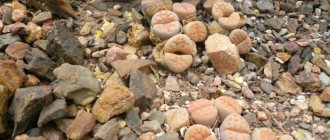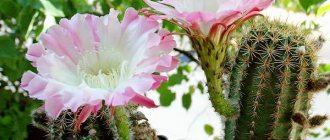How to care for this species at home?
Temperature
In spring and summer, the most optimal temperature is -20 – 25 °C. An increase in temperature is undesirable, the flower overheats, begins to fade, and the growth and development of the flower slows down. In autumn, the air temperature should gradually decrease to 10 – 15 °C.
Watering
Watering is moderate, like all succulents, the echinocactus Gruzoni red does not tolerate dampness and excessive moisture. In spring and summer, watering should be done once every 10-12 days. In extreme heat, it is recommended to lightly spray the stem to reduce the temperature. Spraying clears dust and refreshes the flower. In autumn, watering is reduced.
Important! The soil should dry out well between waterings. It is better to water through a tray or by immersion
After watering, water must be drained from the pan immediately; getting the roots wet is unacceptable.
Light
The variety is not afraid of direct sunlight. It is better to install pots on the south, south-east side of the house. After wintering, the plant is gradually accustomed to direct sunlight. Due to lack of light, the stem becomes deformed, wrinkles, grows one-sidedly, and can shed its thorns. Rotate the pots clockwise periodically to ensure even light exposure.
Priming
The soil should be light, loose, enriched with minerals, slightly acidic.
Small stones, gravel, and red brick chips are used as drainage. Composition of the soil mixture:
- Leaf soil - 1 tsp.
- Turf soil – 2 hours.
- Coarse river sand – 1 tsp.
- Peat – 1 hour.
- Drainage.
To prevent fungal diseases, it is recommended to add crushed charcoal to the soil.
Trimming
This species does not need special shaping pruning. In case of stem disease or root rotting, the plant requires urgent help:
- Carefully remove the flower from the pot.
- Rotten roots are cut off completely.
- The trunk is cut on all sides, wedge-shaped, around the entire circumference.
- The sections are powdered with crushed activated charcoal or charcoal.
- The turned barrel is installed vertically in a dry transparent glass.
- The lighting is bright, watering stops.
New roots appear within a month.
Feeding
They begin to fertilize the flower after wintering. Feeding continues until the end of summer. It is necessary to use special liquid fertilizers for cacti. Fertilizers must contain microelements - chelates. Nitrogen fertilizers are applied only at the very beginning of spring.
To stimulate flowering, they are fertilized with potassium-phosphorus fertilizers (“Hylea for cacti and succulents”) To feed the root system, concentrated fertilizers with magnesium and other microelements are used. Organic fertilizers are contraindicated. In autumn, fertilizing is reduced.
Pot
The diameter of the pot should be 1-1.5 cm larger than the stem itself. The pot or container should not be too deep - the substrate will retain excess moisture. It is better to use ceramic containers; they do not overheat in the bright sun and allow air to pass through well. Holes must be made at the bottom of the pot to allow water to drain.
Transfer
The plant needs replanting every 3 years, even if the flower has not outgrown the size of the container. When replanting, the soil completely changes.
Due to the dense thorns, difficulties arise with the transplantation procedure. It is necessary to use thick gloves or a special wire loop - grip
The loop is carefully placed between the spines so as not to break them. The soil should be steamed or baked in the oven for disinfection before planting.
It is recommended to transplant in early spring. Transplant procedure:
- Using a loop, the flower is carefully removed from the pot.
- Dry and rotten root shoots are cut out.
- The cut areas are treated with crushed coal.
- It is necessary to keep the flower for 2 days for the cut roots to heal.
- The plant is transferred, the roots are buried.
- Watering - through a tray 4 days after transplantation.
Important! After 2 weeks, it is necessary to feed the flower through watering. In order for the transplanted echinocactus to grow straight, without distortion, it is important to place it evenly in the new pot
In order for the transplanted echinocactus to grow straight, without distortion, it is important to place it evenly in the new pot
Wintering
The winter temperature of the flower is 9 – 11°C. Additional air humidification is not required; watering stops.
The lower the air temperature, the less moisture the plant requires. From hypothermia, brown spots appear on the stem, and there is a risk of fungal infection.
To avoid freezing of the roots, the pots are placed on wooden stands. There is no need to feed the plant in winter. The lighting is bright. It is necessary to illuminate the plants with special lamps for 2–3 hours a day.
You will find more information about general care of echinocactus here.
Types of echinocacti with photos and names
Most often, it is the echinocactus Gruzoni that is grown at home. The remaining species differ in appearance from it in the color of the flowers and spines, as well as in the number of ribs. It is the number of ribs that is considered the best guide when determining the type of echinocactus.
Echinocactus grusonii
Or Echinocactus Gruzon, Gruson. This species has rounded stems and light-colored needles. As it grows, Echinocactus grusonii acquires a barrel-shaped shape and is distinguished by numerous ribs. Their number is at least 35 pieces.
When choosing such a cactus in a store, you should remember that its spines can only be colored in shades of white or light yellow. Specimens with bright needles were obtained by adding special dyes to the soil to achieve a more decorative effect. Some time after purchase, the needles of such a plant should acquire their natural color. Usually, food dyes are used to obtain exotic colors, but if the paints still contained substances harmful to the cactus, it may begin to hurt. In addition, when dyes get into the stem, they can impede the production of chlorophyll. To be more likely to buy a healthy cactus, it is better to avoid such multicolors, choosing a more modest natural version of the plant. If a painted cactus has already been purchased, it is cared for like an ordinary one. But you can try to remove some of the paint by carefully wiping the surface of the stem with a cotton swab dipped in warm water.
Echinocactus platyacanthus
Or a broad-spined, huge echinocactus. Mexican species up to 2 m tall. Echinocactus platyacanthus (ingens) grows up to 1.5 m in width. No more than 25 ribs are formed on its stems. They contain areoles, complemented by wide gray needles with dark strokes. Their length can be from 3.5 to 4.5 cm. During the flowering period, yellow tubular flowers appear on the stems. Unlike the Echinocactus Gruzon, at home this species often pleases with its flowering.
Echinocactus parryi
A miniature species, the height of which even in nature reaches only 30 cm. Echinocactus parryi has from 13 to 15 ribs. Over time, its spherical shoots begin to take on the shape of a cylinder. The stem of this cactus is colored blue-gray. The remarkableness of the species is not only in its size, but also in the length of the spines. It can reach 10 cm. Young needles are painted in a bright pinkish-brown color, but then lighten. Domestic specimens do not tolerate waterlogged soil well, so they should be protected from the development of rot.
Horizontal Echinocactus (Echinocactus horizonthalonius)
The remarkableness of this species is reflected in its name. The stems of Echinocactus horizonthalonius do not stretch upward as they grow, but acquire a flattened shape. They have from 10 to 13 ribs in a spiral arrangement. Each areola includes up to 6 curved spines. They have a reddish color, gradually changing to amber. The flowers have a lilac-red hue.
Texas Echinocactus (Echinocactus texensis)
A medium-sized multi-ribbed species up to 20 cm high with a stem width of about 30 cm. Echinocactus texensis lives in grass. The color of the stem can vary from green to gray-green. The needles are colored brownish, gray or pink, with the radial spines bent downwards. The flowers have a silver-pink color and a reddish throat and appear on bushes 10 cm wide.
Echinocactus polycephalus
At home, this type of echinocactus grows up to 70 cm. Echinocactus polycephalus has colored spines, painted red-brown, pink or yellow. The number of ribs ranges from 15 to 20 pieces.
Cacti and Succulents Indoor Plants
Growing
Due to a sharp decline in populations, the United States and Mexico have placed all species of Echinocactus under protection. Nevertheless, these plants are actively grown in specialized farms in many countries. Therefore, today it is possible to purchase seeds not only of the most cultivated Echinocactus Grusonii (E. grusonii), but also of other representatives of the genus.
However, when germinating seeds, you should consider the following risks:
- a strong shell can pinch the top of the seedling;
- the roots often appear above the soil surface;
- If there is insufficient ventilation, mold and algae appear.
In addition, completely healthy seedlings suddenly die. It is much easier to buy an already grown plant and care for it according to the general rules.
In indoor conditions, flowering of Echinocacti is so rare that the likelihood of getting your own seeds is close to zero.
IN THE PHOTO: Echinocacti with spines of all colors of the rainbow often go on sale. The unusual coloring did not appear thanks to nature or the work of breeders. Enterprising sellers use food coloring to attract customers' attention. Such an “improvement” is generally harmless to the plant, and the paint will definitely come off over time.
Vegetative propagation is possible, although it is associated with certain difficulties. Children appear only when the stem is damaged. You can make neat cuts, wait for the formation of “new” plants and separate them from the mother plant.
Description and characteristics
The stem of the cactus with colored needles is spherical in shape, but over the years it becomes barrel-shaped. An adult plant is very large both in height and in width. It does not bush, if the growing conditions are favorable, then the children do not appear.
Blooms in late spring early summer. Flowers appear only on those cacti that are more than 20 years old, and the stem is forty centimeters wide. Single yellow flowers can be up to seven centimeters in length. They are on the top of the cap like a wreath.
Botanical portrait
In indoor conditions, the Gruzoni echinocactus (Echinocactus grusonii) grows no more than 40 cm in diameter. It rarely branches, except as a result of damage to the stem. Children formed on the plant most likely indicate some kind of dysfunctional process with it. It is advisable to use them for rooting, so as not to completely lose the flower.
The stem is bright green, consists of 30-40 ribs, densely covered with strong yellow spines, although there are alba forms with white needles. Each areola usually contains 1-4 central needles and up to 10 radial needles directed in all directions. The top of the ball seems to be dotted with yellow fluffs - this impression is created due to the formation of young areolas.
Flowering in indoor cultivation rarely occurs, only at a much mature age. The flowers are small, short-tubular, arranged in a ring around the crown of the ball, the petals are narrow, light yellow.
On sale there are forms of Echinocactus Gruzoni E. grusonii f. alba and E. grusonii f. curvispinus.
General information
Help: In nature, there are no echinocacti with red or green spines. You need to know that in this case the plant was grown using dyes to obtain this color of the spines.
You don’t see Echinocactus blooming very often. For it to bloom, the echinocactus must be at least twenty years old, and the diameter of its stem must be at least forty centimeters. Flowers can be yellow, red or pink. They appear at the top of the plant, the petals of the flower are narrow and drooping.
Rainbow cactus - marketing ploy with coloring
On the shelves of flower shops, balls of Echinocactus Gruzoni are often displayed in bright red, blue, orange and yellow shades called “rainbow cactus”. Echinocactus Gruzoni does not have such natural colors; plants are colored for sale - at best, with food coloring. They simply remain on the finger when rubbed across the surface of the cactus. Much worse for a plant colored with printer ink. It can be seriously injured or even killed. Money spent on buying a beautiful cactus will be wasted.
A similar marketing ploy is used when selling the so-called echinocacti Gruzoni Red (red) or Rainbow, only the plants have colored spines, the stem remains green. The needles are the more durable part of the cactus, and the cactus itself, as a rule, does not suffer from such a modification; only over time the color disappears, and the spines again acquire their natural yellowish appearance.
Features of choice when purchasing
There are a large number of species of Echinocactus on sale.
In reality, such varieties of cactus do not exist; the spines are simply painted in the appropriate colors with food dyes - respectively, red or several bright shades at once
You can buy such cacti with virtually no fear, because caring for the red echinocactus gruzoni or Rainbow costs the same as for a regular one, you just need to pay attention to the fact that dyes can negatively affect the plant, so if possible you should try to wash them off
Description
The genus Echinocactus (family Cactaceae) at the beginning of the 20th century consisted of 200 species. By the end of the century, this number had decreased dramatically. Some species were combined, and for the majority, independent genera were identified: Copiapoa, Parodia, Ferocactus, Melocactus, Eriosice, Discocactus and others. Today, only six species remain officially recognized Echinocacti.
The first part of the name of this genus of cacti is “echino,” translated from Greek as “hedgehog.” Indeed, thanks to its rounded shape and abundance of spines, the plant is distinguished by its resemblance to an insectivorous mammal.
All species of Echinocacius naturally grow in North America, choosing as their habitat the subtropical deserts of Mexico and the USA with clay and calcareous soils. They have successfully adapted to bright lighting, sudden changes in air temperature, and prolonged droughts. In nature, these cacti live for hundreds of years, slowly growing in width and height.
IN THE PHOTO: Echinocacti have a superficial root system.
The rounded stem becomes slightly elongated with age. The number of ribs in some species reaches up to 50. They are clearly visible only in adult plants; in young plants they resemble small tubercles. The surface of the stem is densely dotted with areoles with 1–4 central spines and 8–10 radial spines. The spines can be straight or curved, painted white or yellowish.
IN THE PHOTO: At the top of the stem of Echinocactus, the areoles are most crowded. Their felt pubescence created a distinctive feature of the genus - a woolly crown.
Echinocacti begin to bloom at the age of 20 years, sometimes later.
IN THE PHOTO: Echinocactus flowers - yellow, pink, reddish appear at the top, forming a wreath.
After self-pollination, fruits are set - oblong false berries that open at the bottom. Each of them contains many small dark seeds, but only a small part succeeds in sprouting. The hard shell prevents germination. In addition, ants and other insects love to eat plant seeds.
IN THE PHOTO: The hard shell of Echinocactus seeds prevents their easy germination.
Echinocacti occupy pride of place in flower collections. Attractive appearance, coupled with unpretentiousness and long life span, determine the high popularity of plants.
How to properly transplant echinocactus Gruzoni after purchase
Echinocactus Gruzoni recovers from transplantation as if from a long illness. Therefore, slow growth is a significant plus. Young specimens are replanted once every two years; adults only need one procedure every 3–4 years. The best time for this is mid-spring.
The plant does not need a large pot. It is enough to increase its diameter by 1–2 cm each time. Choose a shallow container, similar to a bowl or salad bowl - the root system of the Echinocactus Gruzoni is superficial. Ceramic is preferable among materials - it allows air to pass through better.
A deep volume pot is not suitable for Echinocactus Gruzoni - the root system of the plant is superficial
A special soil for cacti and succulents, which can be purchased without any problems at the appropriate store, is quite suitable for growing the Gruzoni echinocactus. Another option is to mix the substrate yourself. The soil should be light, slightly acidic (pH 5.5–6) and not too nutritious:
- coarse river sand, universal soil for decorative foliage indoor plants, small pebbles or crushed stone (1:1:1);
- turf and leaf soil, sand, small pieces of charcoal (4:2:2:1);
- crushed pumice, leaf soil, perlite or vermiculite (1:1:2).
It is useful to add crushed chalk or powdered activated charcoal to any substrate (1–2% of the total volume of the mixture). This will help prevent the development of root rot.
Special soil for cacti and succulents will suit the echinocactus Gruzoni
There is nothing complicated about the transplant itself:
- Fill the new pot with expanded clay about 0.3 cm in diameter or fine chips from red bricks. The older they are, the better. The thickness of the drainage layer is at least 3–4 cm. On top is 1–2 cm of freshly prepared disinfected substrate.
- Remove the plant from the pot, being careful to disturb the roots as little as possible. They are very fragile in the Echinocactus Gruzoni. Since, unlike the roots, its thorns are by no means thin, even thick gloves, thick fabric, newspapers, and other improvised means will not save you from minor abrasions and scratches. Experienced cactus growers recommend twisting a loop of strong wire with a long “handle.” They put it on the ball, fixing it approximately in the middle, trying not to break the needles. After this, the pot can be turned upside down and, gently tapping, remove the plant.
- Examine the earthen lump. If rotting, blackened, dried roots are visible, cut them off with a sharp, disinfected knife. Sprinkle the “wounds” with crushed chalk, activated carbon, cinnamon, or treat with iodine or brilliant green.
- Allow the roots to dry out for 2-3 days in the open air to allow the inevitable microdamage to heal. The larger the plant, the longer it will take.
- Place the echinocactus in a new pot. Add soil around the edges. Be careful not to bury the base of the stem.
- Place the plant in light partial shade for about a week. Provide warmth (about 25ºC). The first watering is no earlier than 3-4 days after transplantation.
The main difficulty in transplanting Echinocactus Gruzoni is to remove the plant from the pot with minimal damage to itself and it.
Echinocactus types photos and names
Echinocactus gruzoni lives specifically in Mexico, where its size significantly exceeds the prickly balls with a diameter of 40-45 cm that are typical for home furnishings. The spines are either straight or slightly curved, have quite high strength, and are oblong.
It is precisely in connection with the latter property that the entire family as a whole began to be called “hedgehog cacti” and, by the way, this is not their only unofficial name. The fact is that this species, after 13-14 years of development, changes its shape from spherical to barrel-shaped with dimensions up to 1.2-1.5 meters in height and up to 0.9-1 meter in width, thus from a “hedgehog cactus” turning into a “golden barrel”.
The color of the spines includes pale yellow and, less often, white tones, which should be taken into account before purchasing this cactus, since the store-bought echinocactus gruzoni contains various additives in its name, such as “red” or “rainbow” (echinocactus red and echinocactus rainbow, respectively ), in fact, is not a separate variety, as you might think at first, but is just painted a different color with ordinary food coloring, or maybe, what is much worse, with a dye from a printer.
It is better to avoid such “colored hedgehogs”, because, although with age they will clear themselves of foreign impurities (returning the spines to a natural yellowish tint), but while this happens, the owner may encounter serious problems when growing, which should not have happened basically.
Echinocactus planosumata
Slightly less popular, it is slightly taller - 1.5-2 meters - and wider - 1-1.5 meters, has much fewer ribs - no more than 20-25. The grayish spines are straight in shape. Due to its taste, the species almost ended up on the endangered list in Mexico, where it has become an integral component of culinary sweets.
Echinocactus parry is the same spherical at the beginning of growth, then it acquires a cylindrical shape. This beauty from the north of Mexico has a relatively small height - 30-35 cm and curved brown-pink spines, which turn white over time. This species has very high care requirements associated with poor seed germination and susceptibility to various diseases at a young age.
Echinocactus horizontalis is somewhat different from its “brothers” in its shape, and specifically in its flattened spherical outline with 11-12 spirally twisted ribs. Even adult representatives of the species are characterized by a relatively small diameter of 25-30 cm and slightly thickened curved spines of a rich red color.
Unlike other types of Echinocactus flowering, horizontal flowering is easy to achieve at home (its beautiful flowers are up to 3 cm long and lilac-red in color), following basic care rules.
Echinocactus broad-spined is notable for its myriad of spines, up to 3 cm long, brown in color. At the same time, the dimensions of the aged specimen are 150x125 cm in height and diameter. During the flowering period, yellow funnel-shaped flowers appear.
Echinocactus polycephalus actually has multi-colored needles - yellow, brown-red or pink. When forced into an apartment, it can grow up to 70 cm in height with 15-20 ribs and a small number of spines.
Echinocactus polycephalus is similar in both size and number of ribs to the previous species. At the same time, its spherical shape with bristling spines, to the greatest extent among all echinocacti, claims to be compared with a real hedgehog. Prefers to be part of a large group, which can include up to 100 plants!
Flowering of horizontal and wide-needle echinocactus (with photo)
Echinocactus is the oldest genus of the Cactaceae family, which includes about 10 species of large spherical cacti. Literally translated as “hedgehog cactus”; amateurs call them barrel cacti. Their sizes are large; the echinocactus Gruzoni (E. grusonii) is the most common in culture.
Look at the photo - the stems of echinocacti are spherical, very large, light green in color:
Pronounced ribs (about 30) are armed with golden-yellow spines (up to 5 cm). The spines are translucent, hard, curved. In nature, it is almost completely destroyed, but is widespread in indoor culture. This golden ball can grow up to 1.3 m in height and up to 1 m in diameter, although specimens over 100 years old reach such sizes. Yellow flowers up to 4 cm in diameter appear in the summer at the top of the plant in the form of a ring.
Pay attention to the photo - flowering of echinocactus occurs only when it reaches 3-4 years of age:
Horizontal Echinocactus (Echinocactus horizonthalonius Lem.). One of the smallest echinocacti: its maximum height is 25 cm. There are 8 ribs. The spines are red when young, later yellow; up to 4 cm in length. Flowers are different shades of red.
Echinocactus platyacanthus Link & Otto; . View from Mexico. The plant is up to 150 cm high and up to 125 cm wide, with a heavily pubescent top. There are more than 50 ribs. The spines are brown, up to 3 cm in length. The flowers are yellow, funnel-shaped, 2 cm long.
Echinocactus polycephalos Engelm. & JMBigelow - Echinocactus multicapita. View from the Mojave Desert (USA).
By cutting down a barrel-sized echinocactus from the prickly pear family, the traveler received moisture for himself and succulent food for his horse. Interestingly, in these places, mules and donkeys have perfectly adapted to independently knock off cactus spines with their hooves in order to enjoy the tasty stem and its juice without interference.
Even wine is made from echinocactus. The famous Mexican red wine, not strong, only twelve degrees, but sweet. It has only two drawbacks: it cannot be stored for more than two weeks and cannot be transported over long distances.
Reproduction of Echinocactus by children
In nature, echinocactus does not tend to branch, but in culture this will happen if the main stem is damaged, and the stem itself stops growing.
You can leave the plant in this state, but in case of darkening of the stem or other painful signs, feel free to separate the lateral shoots by gently twisting them around the axis. Root under the same conditions (soil, lighting, temperature, watering) as for germinating seeds.
Echinocactus gruzoni is red as it blooms. Description
Echinocactus belongs to the cactus family. It grows naturally in the desert areas of Mexico and the Southwestern United States. Echinocactus Gruzoni is the most common species both in nature and in indoor floriculture. The locals call this perennial, slow-growing plant “hedgehog cactus.” Indeed, echinocactus resembles a hedgehog in its shape and spines. The name Echinocactus was named after Hermann Gruzoni, a German inventor and collector of these prickly plants.
Echinocactus grows to very large sizes in the wild
Echinocactus Gruzoni in natural conditions grows to gigantic sizes, reaching a height of up to one and a half meters and a width of up to a meter. The cactus is a long-livers, growing up to 200-500 years. As the plant grows, it changes from a ball shape to a barrel. Therefore, its second name is “golden barrel”. It should be noted that as they grow older, the appearance of the echinocactus changes. After three to four years, the small tubercles become sharp ribs covered with dense, sharp spines. The growing upper part is first covered with “fluff” - young, not yet hardened spines.
So, the echinocactus Gruzoni is a spherical stem covered with sharp ribs located vertically. The number of ribs ranges from thirty-five to forty-five. The surface of the stem is glossy and green. On the ribs there are areoles, from which spines grow in a bunch. Each areola contains radial spines (about ten) and central spines (from one to four). The length of the spines is from three to five centimeters. The central spines are longer than the radial ones. On the growing top, a “hat” of young spines resembling fluff looks beautiful. The color of the spines varies from white to yellowish.
Attention! In nature, there are no Gruzoni echinocacti with red, green, or bright yellow spines. Such specimens are grown for sale using dyes
In the best case, the plant will acquire its natural color over time. And if you use harmful paints, the cactus begins to hurt and may die.
In indoor conditions, echinocactus grows up to 40-60 centimeters in height and 40 in diameter. But to reach such a size, it will take more than a dozen years.
Blooming Echinocactus Gruzoni
Waiting for flowering will also be difficult, because they bloom after twenty years. The cactus blooms in May-June. First, a bud appears at the top, on a long stalk, from which a yellow flower blooms. The flower tube is funnel-shaped, pubescent on the outside. The petals are thin and glossy. Closer to the edge of the petals, their color becomes darker, acquiring a brown tint. The corolla of the flower reaches 7 cm in length and 5 cm in diameter.
Description of Echinocactus Gruzoni
The stem is spherical, but over the years it looks more like a barrel. The cactus can reach a meter in height and width.
It does not form bushes, and children do not separate from it. Even if the conditions are favorable. Therefore, Echinocactus Gruzoni grows alone. However, sometimes small families consisting of a pair of such “barrels” can be found.
The stem is glossy and dark green in color. Larger representatives may have 30 to 40 ribs on the stem. Fluffy areolas are scattered on them.
The areoles at the top of the cactus form a small yellow cap. This color is provided by yellowish spines.
Their length reaches five cm. The bright color of the spines makes them stand out against the dark background of the stem. It is because of this contrast that Echinocactus is called the “Golden Ball”.
Growing conditions
Illumination
Unlike many other cacti, Echinocactus needs to be kept in light all year round. He is not afraid of direct sunlight. Therefore, it is better to place the cactus on the windowsill of a south window. In summer, it is recommended to take the plant outside. For example, not a balcony or a garden.
With a lack of light, the cactus will gradually die. First, the thorns will begin to fall off, and then the stem itself will wither.
Temperature
It is better to avoid hot places. At temperatures above 30 degrees, the growth and development of the plant deteriorates. The cactus goes into a premature state of dormancy, which can have a bad effect on its future existence.
Between October and the end of February, the cactus enters a natural state of dormancy. During this time, you need to provide a room with a low temperature (about 12 degrees). If the temperature is lower, the cactus will freeze and its appearance will suffer significantly.
Humidity
The air humidity in the apartment is suitable for growing. It does not need spraying. Sometimes you can take a warm shower.
Earth mixture
Neutral and mineral soil is ideal
It is important that it allows air and water to pass through well. If you intend to use a factory mixture, then add a little brick chips or small pebbles to it
You can also add some charcoal. It will protect the plant from rot. Don't forget the substrate. You can mix it yourself.
Rules of care
How to water Echinocactus Gruzoni
- For Echinocactus Gruzoni, watering is not so important, so its frequency can be minimized.
- Before watering again, make sure the substrate in the pot is completely dry. Water must be infused and at room temperature.
- Avoid overwatering as this can cause rot.
- In winter it is better to refuse watering.
Top dressing
Feeding is necessary during active growth. About once a month. Use factory-made fertilizers intended for cacti or succulents. During the dormant period, it is strictly forbidden to apply fertilizers to the soil.
How to transplant Echinocactus Gruzoni
Flower growers do not recommend replanting it. This is due to the fact that its roots are very sensitive, and its needles are very hard and sharp. If there is a need for a transplant, then this should be done very carefully.
Experienced gardeners recommend moving the cactus itself using a wire loop. This way you won't get hurt or damage the roots.
Reproduction of echinocactus gruzoni at home
In most cases, seeds are used for propagation. However, reproduction by children is also possible. But the second option is used very rarely, since children are not often formed on mother plants.
Classification and description of Echinocactus Gruzon
Plant classification
Scientific name: Echinocactus grusonii Synonyms: Echinocereus grusonii, Echinocactus corynacanthus, Echinocactus galeottii Common name: Echinocactus Gruson Family: Cactaceae (Cactaceae) Subfamily: Cactoideae Genus: Echinocactus (Echinocactus)
Echinocactus grusonii is a type of spherical succulent belonging to the Cactaceae. On the Internet you can find two variants of the name of these cacti - E. Gruzona or E. Gruzoni. The correct name is the first option.
The plants are distinguished by their rapid development, their height reaches up to 3 meters, and their width is about 1 m. The culture is distinguished by its stems of a spherical configuration, young bushes are characterized by almost the same shape - their diameter corresponds to their height, but this goes away over time. The maximum height of specimens grown at home is up to 1.5 meters.
Numerous ribs are densely covered with spines. The areoles are usually large in shape, with slight pubescence. The flowers of the bush are yellow, pinkish or coral in color, they are located at the top. The petals are usually narrow. Flowering occurs in May-June. The length of the bud is up to 7 centimeters.
Photo of Echinocactus grusonii flowers
The most popular plant species is the cactus Echinocactus grusonii. It got its name in honor of Herman Gruson, who was a famous German inventor who had a huge collection of cacti.
This is a fast-growing crop, has golden spines, rich dark green stems, and bright yellow flowers. Adult bushes can withstand even a slight decrease in temperature - down to -4°C. For propagation, the seed method is mainly used. Since this is the most common species, we have prepared rules for growing and caring for it.
How to determine how old Echinocactus Gruzon is
Often the owners of this amazing cactus, which they received as a gift or bought quite large, have a question - how to determine the age of Echinocactus Gruzoni. The age of this type of cacti is determined by periods of vegetative growth and dormancy. In the summer, when the cactus grows, its needles also increase in size. During the winter dormant period, the flower stops its growth, and accordingly the needles also stop growing. Because of this, marks in the form of ribs (vegetative period) and depressions (dormant period) are formed on its needles, as shown in the photo.
You can calculate the age of a cactus by counting the number of grooves or the number of depressions. But you need to count on the lowest needles, since they were formed first.
Cactus Echinocactus Gruzoni care at home. Transplantation of Echinocactus Gruzoni
The plant does not like too frequent transplants. Any, even slight mechanical damage to the root system is very painful. That is why they try not to disturb the flower again with transplants. The only exceptions are situations when the echinocactus Gruzoni has become cramped in the flower container or the roots have rotted.
After purchasing the flower, they are quarantined for 2-4 weeks. It is necessary both for the plant to get used to the microclimate of the new room, and for the grower to make sure that the cactus that has just arrived at the house is free of diseases and pests.
Choosing a flower container
The pot for the cactus is selected to be low - its root system is located in the surface layer of the earthen clod. The diameter of the vessel should exceed the circumference of the echinocactus ball by 1-2 cm.
The material of the pot does not play a very big role, but if you have a choice, it is better to go with earthenware. There is less risk of rotting of the root system, since the evaporation of moisture from the soil mixture occurs more intensely.
There must be a sufficient number of drainage holes at the bottom of the pot for the timely drainage of excess irrigation water.
Attention! During transplantation, you should not forget about the traumatic needles of the plant. It is necessary to move the echinocactus from one pot to another using a wire loop or a thick towel folded in several layers, so as not to prick the skin on your hands and fingers.
Soil preparation
The plant is successfully grown using ready-made soil mixtures called “For cacti and succulents,” purchased at a flower shop. A self-prepared soil mixture includes the following components:
- 1 part leaf humus;
- ½ part coarse river sand;
- 1 part peat;
- a couple of tablespoons of crushed charcoal.
At the bottom of the pot, lay a layer of expanded clay drainage no less than 1/3 of the height.
Step-by-step instructions for transplanting Echinocactus Gruzoni
- The plant is transplanted from dry soil to dry soil, except for the moment when the earth ball is too compacted, and it must be soaked on the eve of transplantation so as not to injure the roots.
- The flower is carefully removed from the old pot and the old soil mixture is carefully shaken off.
- Place the echinocactus Gruzoni in a new pot, but do not fill it with a new soil mixture.
- Leave the flower for a couple of days so that the roots dry thoroughly.
- Inspect the root system; if there are no wet areas, add new soil mixture to the pot.
- Water for the first time after transplantation no earlier than a week later.
Accommodation requirements
Echinocactus Gruzoni is a very light-loving plant, and only well-lit window sills oriented south are suitable for its cultivation. Due to lack of light, a flower may even lose some of its needles. However, in the spring, with a sharp increase in the intensity of sunlight on the cactus, burns are possible. The flower is gradually accustomed to the spring sun, over several days.
Contrary to the general opinion that cacti love heat, the most suitable temperature for keeping Echinocactus Gruzoni in the summer ranges from 20 to 25 degrees Celsius. At higher thermometer readings, the plant stops its already rather slow growth. In winter, the optimal temperature in the room where the flower grows is 10-15 degrees above zero.
First steps after purchase
The purchased Echinocactus must be quarantined for two weeks. This time is enough to detect pests that were not identified during purchase.
The appearance of a white coating and cotton-like lumps on the stem indicates the presence of a mealybug. You need to spray the Echinocactus with a foamed solution of laundry soap, and after an hour give it a warm shower. After drying, treat with an insecticide. Good results are obtained by using “Calypso”, “Confidor”, “Biotlin”. It is acceptable to carry out 2-3 procedures every 5-7 days.
Silvery-brown tubercles on the stem indicate that scale insects have settled on the plant. Taking a cotton swab, you should carefully apply vinegar or alcohol to the insects, and after a while, carefully scrape off the pests. Then Echinocactus will need a warm shower, and after drying, treatment with insectoacaricide: “Actellik”, “Phosbecid”, “Metaphos”. To destroy the possible offspring of pests, repeated treatment is required after a week.
IN THE PHOTO: If it is necessary to transplant Echinocactus, it is placed in a suitable substrate and pot, and at first it is not watered. When the roots are restored, the soil is slightly moistened and fertilizing is applied.
Diseases and treatment
Diseases in echinocacti are mainly caused by excess moisture or waterlogged soil. Eliminating the problem should begin by reducing watering. They should be rooted immediately.
Diseases and parasites that often affect Echinocactus are:
- spider mites. The plant must be treated with an acaricidal agent, which must be used to treat the cactus for two weeks, once every 7 days.
- mealybugs. To combat parasites, use a soap solution with alcohol, which is used to treat the plant daily after washing the cactus under running water.
- scale insect. For treatment, you need to treat the affected areas with cotton pads soaked in alcohol or spray the plant with Actellik solution twice a month.
Compliance with the rules of care will help prevent the development of diseases in echinocacti and provide all the necessary conditions for its proper growth and flowering
It is especially important to know how to water a flower so that the roots of the plant do not rot.
Growing echinocactus from seeds
The plant is characterized by generative reproduction; in nature, the cactus self-sows.
You can buy Echinocactus seeds in flower shops. It is advisable to start the sowing process in the spring.
- Place the seeds in a fabric bag and soak for 15-20 minutes in a 2% Trichodermin solution.
- Then take wide containers with a mixture of sand and peat, spread the seeds over the surface, spray with a fine spray and place in a warm place (about 22 ° C) with diffused lighting.
- During germination, water moderately, thin out dense shoots with tweezers.
- Place the grown seedlings in separate pots with substrate for adult cacti.
